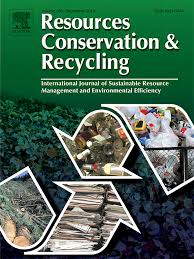
| Tipo de publicación | Articulo |
|---|---|
| Año de publicación | 2015 |
| Autor(es) | Kasulaitis, B., Babbit, C., Kahhat, R., Williams, E. & Ryen, E. |
| Número de páginas | 1-10 |
here is increasing interest in assessing the environmental impacts of consumer electronics using methods such as life cycle assessment (LCA) and material flow analysis (MFA). Both assessment methods depend on quantifying the materials and parts contained in these products, i.e., the bill of Attributes (BOA). While there has been significant work to develop commercial and public databases detailing material and energy flows in production processes, there have been no comparable efforts to characterize BOA. Further, such assessment is complicated by rapidly evolving production processes and product design and consumption trends. This study was undertaken to assess the degree of change in product attributes commonly used as inputs for LCA for a common consumer electronic product: laptop computers. The analysis includes (1) temporal evolution of BOA for a consistent product type over multiple generations (14.1″ laptops) and (2) variability in a fixed year within a product type (laptops of different sizes). In total, eleven laptop computers were disassembled and characterized based on function, components, and materials. In addition, the study included measurement of silicon die area for all product motherboards and thirty dynamic random access memory (DRAM) cards produced over the period 1999–2011.
Results reveal trends important for assessing and designing greener consumer electronics. The fundamental dynamic is the extent technological progress is used to improve functionality versus reduce material and energy footprint. For a variety of attributes, it was found that material footprint did not change significantly over the period 1999–2008, suggesting that improvements in functionality roughly balanced efficiency gains. In particular, total mass and material shares were roughly constant over the period studied. Battery mass, hard disk drive mass, and DRAM die area all decreased per unit of functionality (kWh, GB, MB) over time, but showed roughly constant totals per year. Initial benchmarking to other electronics (netbook, tablet, smartphone) is included here, but further work is needed to determine if the observed pattern in material intensity and functionality is continued over time. This trend, if robust, is important because (1) the BOA inputs to LCA or MFA for an established form factor are surprisingly constant over time, improving temporal robustness of assessment results, and (2) one cannot assume that dematerialization will automatically lead to material and energy reductions for consumer electronics.
There is a need for concerted effort from the LCA community to characterize and model BOAs. As collecting BOA data is labor intensive, heuristics can potentially play an important role to streamline analysis. The product attributes that were most consistent over time and across product class for the case study, like material composition, may be good candidates for streamlining data collection and product characterization. However, potential predictors of silicon die area tested here were highly variable and more sensitive to change over time. The most promising estimation methods were those that focused on measuring the area of the five largest integrated circuits (for all motherboards, just five chips contained as much as 30–70% of all die area) and estimating the rest using an average die area per chip ratio. However, given the uncertainty in all tested heuristics, their application to an LCA or MFA should be used with caution.